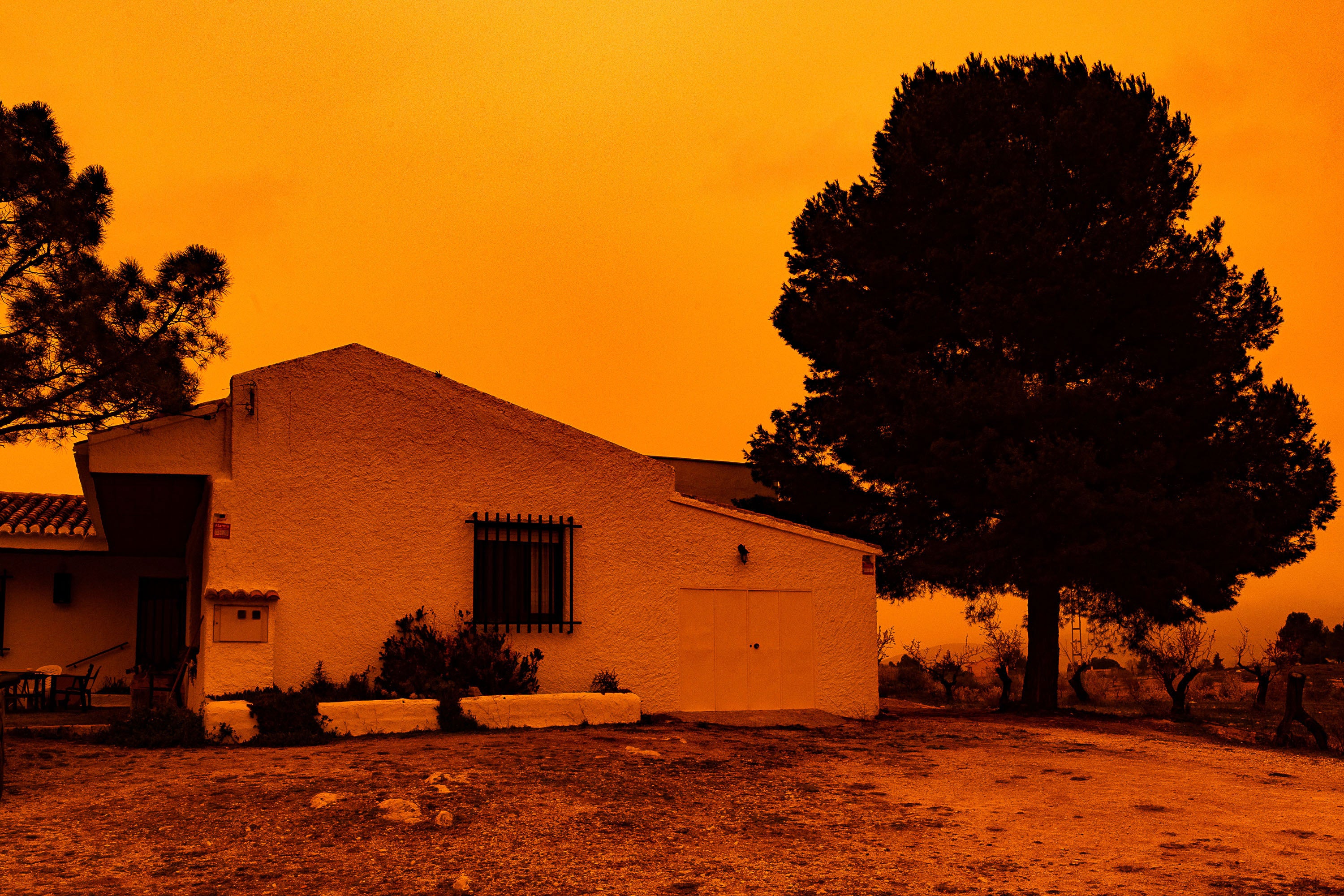Spain dust cloud: Could it affect holidays and travel?
Weather phenomenon heading for UK has seen Spanish skies turned a dull orange

Your support helps us to tell the story
From reproductive rights to climate change to Big Tech, The Independent is on the ground when the story is developing. Whether it's investigating the financials of Elon Musk's pro-Trump PAC or producing our latest documentary, 'The A Word', which shines a light on the American women fighting for reproductive rights, we know how important it is to parse out the facts from the messaging.
At such a critical moment in US history, we need reporters on the ground. Your donation allows us to keep sending journalists to speak to both sides of the story.
The Independent is trusted by Americans across the entire political spectrum. And unlike many other quality news outlets, we choose not to lock Americans out of our reporting and analysis with paywalls. We believe quality journalism should be available to everyone, paid for by those who can afford it.
Your support makes all the difference.A weather phenomenon known as a dust plume is hanging over Spain, with locals in some regions reporting eerie orange skies and poor air quality since Monday.
The “dust cloud” has been transported some 1,500 miles from North Africa.
Meteorologists are warning that it will affect the UK next, with possible implications for travel and even heading outside.
So what is the dust cloud, and how might it affect flights and travel?
What is the dust cloud?
The cloud formed when Storm Celia stirred up a large amount of dust from the Sahara Desert over the weekend. The weather front drove it up into the air and pushed it northwards over the Mediterranean Sea and parts of Spain.
Next it will cross over the UK and is expected to head towards the Netherlands and Germany.
Sand and dust storms of this kind occur annually when powerful, hot winds sweep across loose soils on arid land.
Last summer, vast clouds were swept by trade winds across the ocean from Mali and Mauritania to the Caribbean and Florida.
Which areas have been affected?
In Spain, Madrid and several towns in the southeast saw Bladerunner-esque orange and yellow skies from Monday to Wednesday.
Twitter users in Murcia and Grenada, and some as far away as Switzerland, also posted images of amber skies.
“It is like it was raining mud,” Álvaro López, a student at the University of Málaga, told Associated Press. “I was in the car this morning and mud was literally falling.”
In terms of the UK impact, associate meteorology professor Dr Claire Ryder says: “The plume is forecast to reach southern England during the early hours of Wednesday, covering areas from Dorset to Suffolk, with the southeast counties, particularly Kent, being the worst affected.
“The main plume is forecast to remain over the continent with only the weaker edges grazing southern England. Dust amounts will likely be significantly lower over England compared to extremely dusty conditions currently being experienced over Spain and France.
“Those up early enough on Wednesday will see the tell-tale red dusty sunrise. This is caused by the dust absorbing blue light from the sun and letting more red light through when the sun is low in the sky. By evening the dust will have moved eastwards towards the Netherlands and Germany.
“People are likely to see surfaces such as cars getting dusty and red, and air quality may be slightly lower than usual due to the dust particles in the air.”
What are the effects on travel?
After Storm Celia hit the Canary Islands on Monday, several flights were cancelled due to extreme weather.
Seven flights were diverted and four cancelled from La Palma, Tenerife North, Lanzarote and Gran Canaria, according to the Canary News. However, this appears to have been connected with high winds and stormy conditions as much as the dust cloud itself.
Local news outlets in Spain yesterday warned Malaga Airport customers that the dust cloud could cause delays.
So far, no UK-based airlines or airports have reported flight cancellations due to the phenomenon.
“We’re monitoring the Saharan dust cloud and so far our flights are operating as planned,” said a Tui spokesperson. “There is no special disruptive effect on airline operations,” confirmed a representative from Wizz Air.
Dust clouds can certainly cause havoc for the aviation industry. In February 2020, a large dust cloud hung over the Canary Islands, causing some flights to be suspended, diverted or cancelled.
This week, poor air quality has also been recorded across much of central Spain, as well as Mediterranean islands such as the Balearics.
Spain’s public health officials warned citizens and holidaymakers to avoid outdoor exercise and use face masks when outside. Those with allergies and respiratory problems are particularly vulnerable to spikes in small-particle air pollution.
However, so far the effects on the UK appear to be milder.
“Although it’s very cloudy and murky today in SE England, there’s probably a small amount of dust in the air. Likely to be washed out by rain as the day goes on,” tweeted Dr Ryder this morning.
Richard Miles of the Met Office told reporters: “We don’t expect significant impacts – the most likely would be on the cloudscapes at sunset but, as conditions are likely to be generally overcast and wet for much of the day, this is unlikely to amount to much. There are no air-quality warnings.”
Nevertheless, the charity Asthma UK warned sufferers to carry inhalers with them as this type of dust can trigger attacks.
Join our commenting forum
Join thought-provoking conversations, follow other Independent readers and see their replies
Comments